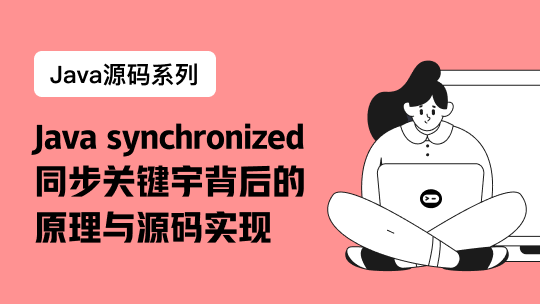首先不谈Striped能做什么,我们来看下如下的代码
/**
* 购买产品
* @param user 用户
* @param buyAmount 购买金额
* @param productId 产品编号
*/
public static void buy(String user,Integer buyAmount,String productId){
System.out.println(user+":开始购买【"+productId+"】的产品");
Product product = DB.getProduct(productId);
if(product.getTotalAmount() > 0 && product.getTotalAmount() >= buyAmount){
int residual = product.getTotalAmount() - buyAmount;
product.setTotalAmount(residual);//更新数据库
System.out.println(user+":成功购买【"+productId+"】产品,产品剩余价值为【"+residual+"】");
}else{
System.out.println(user+":购买【"+productId+"】产品失败,产品剩余价值为【"+product.getTotalAmount()+"】");
}
}
public static void main(String[] args) {
String user1 = "张三";
buy(user1, 10000, "1");
}
/**
* 销售产品
* @author lis
*/
public class Product {
/** ID */
private String id;
/** 总价值 ,每个产品的价值为1W */
private Integer totalAmount = 10000;
//省略getter..setter
}
运行结果
张三:开始购买【1】的产品
张三:成功购买【1】产品,产品剩余价值为【0】
我想大家能够立即看出来,这段代码是有问题的,非线程安全的。
假如同时有两个用户发起购买,一定会出现线程安全问题。
这里我就不在验证了,那么修改buy方法代码结构如下
//在buy方法上加了synchronized,同时使当前线程睡眠5秒
/**
* 购买产品
* @param user 用户
* @param buyAmount 购买金额
* @param productId 产品编号
*/
public synchronized static void buy(String user,Integer buyAmount,String productId)throws Exception{
System.out.println(user+":开始购买【"+productId+"】的产品");
Thread.sleep(5000);//睡眠5秒
Product product = DB.getProduct(productId);
if(product.getTotalAmount() > 0 && product.getTotalAmount() >= buyAmount){
int residual = product.getTotalAmount() - buyAmount;
product.setTotalAmount(residual);//更新数据库
System.out.println(user+":成功购买【"+productId+"】产品,产品剩余价值为【"+residual+"】");
}else{
System.out.println(user+":购买【"+productId+"】产品失败,产品剩余价值为【"+product.getTotalAmount()+"】");
}
}
main方法修改如下
public static void main(String[] args) {
//运行开始时间
long startTime = System.currentTimeMillis();
//这个类主要是,使多个线程同时进行工作,如果不了解建议网上搜索相关的文章进行学习
final CyclicBarrier barrier = new CyclicBarrier(2);
//不限制大小的线程池
ExecutorService pool = Executors.newCachedThreadPool();
final String user1 = "张三";
final String user2 = "李四";
pool.execute(new Runnable() {
@Override
public void run() {
try {
barrier.await();
buy(user1, 10000, "1");
} catch (Exception e) {
e.printStackTrace();
}
}
});
pool.execute(new Runnable() {
@Override
public void run() {
try {
barrier.await();
buy(user2, 10000, "2");
} catch (Exception e) {
e.printStackTrace();
}
}
});
pool.shutdown();
while (!pool.isTerminated()) {
}
System.out.println("运行时间为:【"+TimeUnit.MILLISECONDS.toSeconds((System.currentTimeMillis() - startTime))+"】秒");
}
运行结果
李四:开始购买【2】的产品
李四:成功购买【2】产品,产品剩余价值为【0】
张三:开始购买【1】的产品
张三:成功购买【1】产品,产品剩余价值为【0】
运行时间为:【10】秒
从运行结果不难看出,线程是安全了,但是运行效率降低了,众所周知,在一个方法上加锁,那么锁的粒度太大了。我们能不能对
销售产品的ID进行加锁呢?
比如这样修改buy方法?
/**
* 购买产品
* @param user 用户
* @param buyAmount 购买金额
* @param productId 产品编号
*/
public static void buy(String user,Integer buyAmount,String productId)throws Exception{
synchronized(productId){
System.out.println(user+":开始购买【"+productId+"】的产品");
TimeUnit.SECONDS.sleep(5);//使当前线程睡眠5秒
Product product = DB.getProduct(productId);
if(product.getTotalAmount() > 0 && product.getTotalAmount() >= buyAmount){
int residual = product.getTotalAmount() - buyAmount;
product.setTotalAmount(residual);//更新数据库
System.out.println(user+":成功购买【"+productId+"】产品,产品剩余价值为【"+residual+"】");
}else{
System.out.println(user+":购买【"+productId+"】产品失败,产品剩余价值为【"+product.getTotalAmount()+"】");
}
}
}
运行结果李四:开始购买【2】的产品
张三:开始购买【1】的产品
李四:成功购买【2】产品,产品剩余价值为【0】
张三:成功购买【1】产品,产品剩余价值为【0】
运行时间为:【5】秒
时间立即缩短了,想想如果2个用户购买的是1个产品,这样能够锁定么?运行时间是5秒还是10秒?
那么我们修改main方法中的两个线程,产品ID相同buy(user2, 10000, "1");,这里就不在贴代码了
运行结果
李四:开始购买【1】的产品
李四:成功购买【1】产品,产品剩余价值为【0】
张三:开始购买【1】的产品
张三:购买【1】产品失败,产品剩余价值为【0】
运行时间为:【10】秒
居然同步成功了,那么这个方法是不是就解决了不同产品之间,非同一条数据,就能够降低锁的粒度,同时提高程序的性能问题呢?
那么我们在对main方法中的buy方法调度进行修改:buy(user2, 10000, new String("1"));
运行结果
李四:开始购买【1】的产品
张三:开始购买【1】的产品
李四:成功购买【1】产品,产品剩余价值为【0】
张三:成功购买【1】产品,产品剩余价值为【0】
运行时间为:【5】秒
看到这个结果...很明显失败了,这不是我们想要的结果。。
那么为什么在没有使用new之前是可以进行数据同步的呢?众所周知,synchronized是对象锁,它锁定的堆内存地址在JVM中一定是唯一的。之前之所以没有问题,是因为String的常量池机制,这个如果不清楚...建议搜索相关文章自学补脑
既然上述的形式不行,那么我们怎么降低锁的粒度,达到ID不一样则锁不会冲突呢?
-------------------------------------------------------
那么下面隆重介绍google guava的Striped这个类了
它的底层实现是ConcurrentHashMap,它的原理参照:http://blog.csdn.net/liuzhengkang/article/details/2916620
Striped主要是保证,传递对象的hashCode一致,返回相同对象的锁,或者信号量
但是它不能保证对象的hashCode不一致,则返回的Lock未必不是同一个。
如果想降低这种概率发生,可以调整stripes的数值,数值越高发生的概率越低。
不难理解,之所以会出现这种问题完全取决于缓存锁的大小,我个人是这么理解的,如有错误请批评指正,相互学习!
它可以获取如下两种类型:
java.util.concurrent.locks.Lock
java.util.concurrent.Semaphore
这里我介绍下Lock,而不说Semaphore。
创建一个强引用的Striped
com.google.common.util.concurrent.Striped.lock(int)
创建一个弱引用的Striped
com.google.common.util.concurrent.Striped.lazyWeakLock(int)
上面的两个方法等同于它的构造方法
那么如何理解它所谓的强和弱呢?
我个人是这么理解的:它的强和弱等同于Java中的强引用和弱引用,强则为不回收,弱则为在JVM执行垃圾回收时立即回收。
这里我使用的是弱引用,当JVM内存不够时,回收这些锁。
那么下面直接上代码:究竟如何用这个玩意,修改之前的buy方法
//创建一个弱引用的Striped<Lock>
private static final Striped<Lock> striped = Striped.lazyWeakLock(127);
/**
* 购买产品
* @param user 用户
* @param buyAmount 购买金额
* @param productId 产品编号
*/
public static void buy(String user,Integer buyAmount,String productId)throws Exception{
Lock lock = striped.get(productId);//获取锁
try{
lock.lock();//锁定
System.out.println(user+":开始购买【"+productId+"】的产品");
TimeUnit.SECONDS.sleep(5);//使当前线程睡眠5秒
Product product = DB.getProduct(productId);
if(product.getTotalAmount() > 0 && product.getTotalAmount() >= buyAmount){
int residual = product.getTotalAmount() - buyAmount;
product.setTotalAmount(residual);//更新数据库
System.out.println(user+":成功购买【"+productId+"】产品,产品剩余价值为【"+residual+"】");
}else{
System.out.println(user+":购买【"+productId+"】产品失败,产品剩余价值为【"+product.getTotalAmount()+"】");
}
}finally{
lock.unlock();//释放锁
}
}
运行结果:相同ID的销售产品
张三:开始购买【1】的产品
张三:成功购买【1】产品,产品剩余价值为【0】
李四:开始购买【1】的产品
李四:购买【1】产品失败,产品剩余价值为【0】
运行时间为:【10】秒
---------------------------------------------------------------------
运行结果:不同ID的销售产品
李四:开始购买【2】的产品
张三:开始购买【1】的产品
张三:成功购买【1】产品,产品剩余价值为【0】
李四:成功购买【2】产品,产品剩余价值为【0】
运行时间为:【5】秒
那么我们之前想要的效果达到了。。。
---------------------------------------------------完整代码------------------------------------------------------
package com.lis.guava.study;
import java.util.concurrent.CyclicBarrier;
import java.util.concurrent.ExecutorService;
import java.util.concurrent.Executors;
import java.util.concurrent.TimeUnit;
import java.util.concurrent.locks.Lock;
import com.google.common.util.concurrent.Striped;
public class Operator {
public static void main(String[] args) {
//运行开始时间
long startTime = System.currentTimeMillis();
//这个类主要是,使多个线程同时进行工作,如果不了解建议网上搜索相关的文章进行学习
final CyclicBarrier barrier = new CyclicBarrier(2);
//不限制大小的线程池
ExecutorService pool = Executors.newCachedThreadPool();
final String user1 = "张三";
final String user2 = "李四";
pool.execute(new Runnable() {
@Override
public void run() {
try {
barrier.await();
buy(user1, 10000, new String("1"));
} catch (Exception e) {
e.printStackTrace();
}
}
});
pool.execute(new Runnable() {
@Override
public void run() {
try {
barrier.await();
//buy(user2, 10000, new String("2"));
buy(user2, 10000, new String("1"));
} catch (Exception e) {
e.printStackTrace();
}
}
});
pool.shutdown();
while (!pool.isTerminated()) {
}
System.out.println("运行时间为:【"+TimeUnit.MILLISECONDS.toSeconds((System.currentTimeMillis() - startTime))+"】秒");
}
//创建一个弱引用的Striped<Lock>
private static final Striped<Lock> striped = Striped.lazyWeakLock(100);
/**
* 购买产品
* @param user 用户
* @param buyAmount 购买金额
* @param productId 产品编号
*/
public static void buy(String user,Integer buyAmount,String productId)throws Exception{
Lock lock = striped.get(productId);//获取锁
try{
lock.lock();//锁定
System.out.println(user+":开始购买【"+productId+"】的产品");
TimeUnit.SECONDS.sleep(5);//使当前线程睡眠5秒
Product product = DB.getProduct(productId);
if(product.getTotalAmount() > 0 && product.getTotalAmount() >= buyAmount){
int residual = product.getTotalAmount() - buyAmount;
product.setTotalAmount(residual);//更新数据库
System.out.println(user+":成功购买【"+productId+"】产品,产品剩余价值为【"+residual+"】");
}else{
System.out.println(user+":购买【"+productId+"】产品失败,产品剩余价值为【"+product.getTotalAmount()+"】");
}
}finally{
lock.unlock();//释放锁
}
}
}
package com.lis.guava.study;
import java.util.HashMap;
import java.util.Map;
/**
* 模拟DataBase
* @author lis
*
*/
public class DB {
private static Map<String, Product> products = new HashMap<>();
static {
// 初始化数据
products.put("1", new Product("1"));
products.put("2", new Product("2"));
}
public static Product getProduct(String productId) {
return products.get(productId);
}
}
package com.lis.guava.study;
/**
* 销售产品
* @author lis
*/
public class Product {
/** ID */
private String id;
/** 总价值 ,每个产品的价值为10W */
private Integer totalAmount = 10000;
public Product(String id) {
this.id = id;
}
public String getId() {
return id;
}
public void setId(String id) {
this.id = id;
}
public Integer getTotalAmount() {
return totalAmount;
}
public void setTotalAmount(Integer totalAmount) {
this.totalAmount = totalAmount;
}
}
-------------------------------------------------------------------------------------------------------------------
Striped我就介绍到这里,感兴趣的童鞋可以自己研究下它底层是如何实现的。
我的观点未必正确,如有错误,十分希望各位童鞋能够批评指正,相互学习、相互进步!!!






